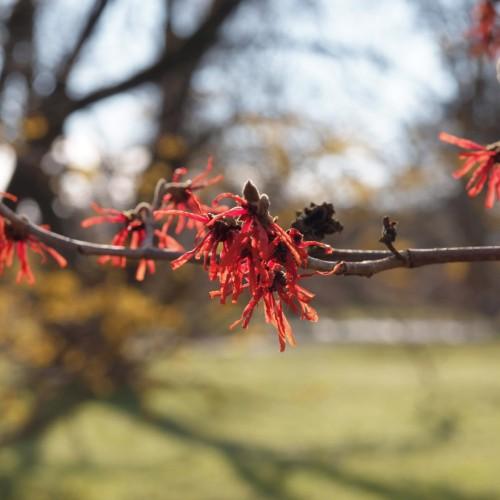
witch hazel
Hamamelis intermedia 'Livia'
Cycle:
Perennial
Watering:
Average
Hardiness Zone:
5 - 8
Flowers:
Flowers
Sun:
Full sun,part shade
Leaf:
Yes
Growth Rate:
Low
Maintenance:
Low
Drought Tolerant:
Yes
watering
When wateringwitch hazel, it is important to ensure the soil is always moist but never soggy. Water the plant when the top 1-2 inches of the soil feels dry to the touch and it is recommended to water it approximately 1-2 times a week. If it is particularly hot and dry in your region, you may need to water it more frequently. Make sure to thoroughly moisten the soil each time. It's also important to water at the soil level in order to avoid wetting the foliage.
sunlight
Witch hazel (Hamamelis intermedia 'Livia') requires medium amounts of direct sunlight for healthy growth and blooming. Aim for approximately 4 to 6 hours of direct sunlight each day. Make sure to avoid planting your witch hazel in a spot that receives too much direct sunlight, as this can damage the plant. Additionally, it is best to avoid planting this species in deep shade, as they require some sun exposure for healthy blooming. If possible, aim to position the plant in the morning or late afternoon sun, as this type of sunlight is not as intense as midday sun.
pruning
When pruning witch hazel (Hamamelis intermedia 'Livia'), the recommended time is late winter or early spring, before the leaves unfurl and flowers bloom. The amount of pruning that should be done depends on the age of the plant as well as the desired size and shape. Generally, the younger the plant is, the more heavily it should be pruned. To control size, remove 1-third to 1-half of the largest branches each winter. Older plants may require minimal pruning, such as selectively removing damaged or dead branches.
